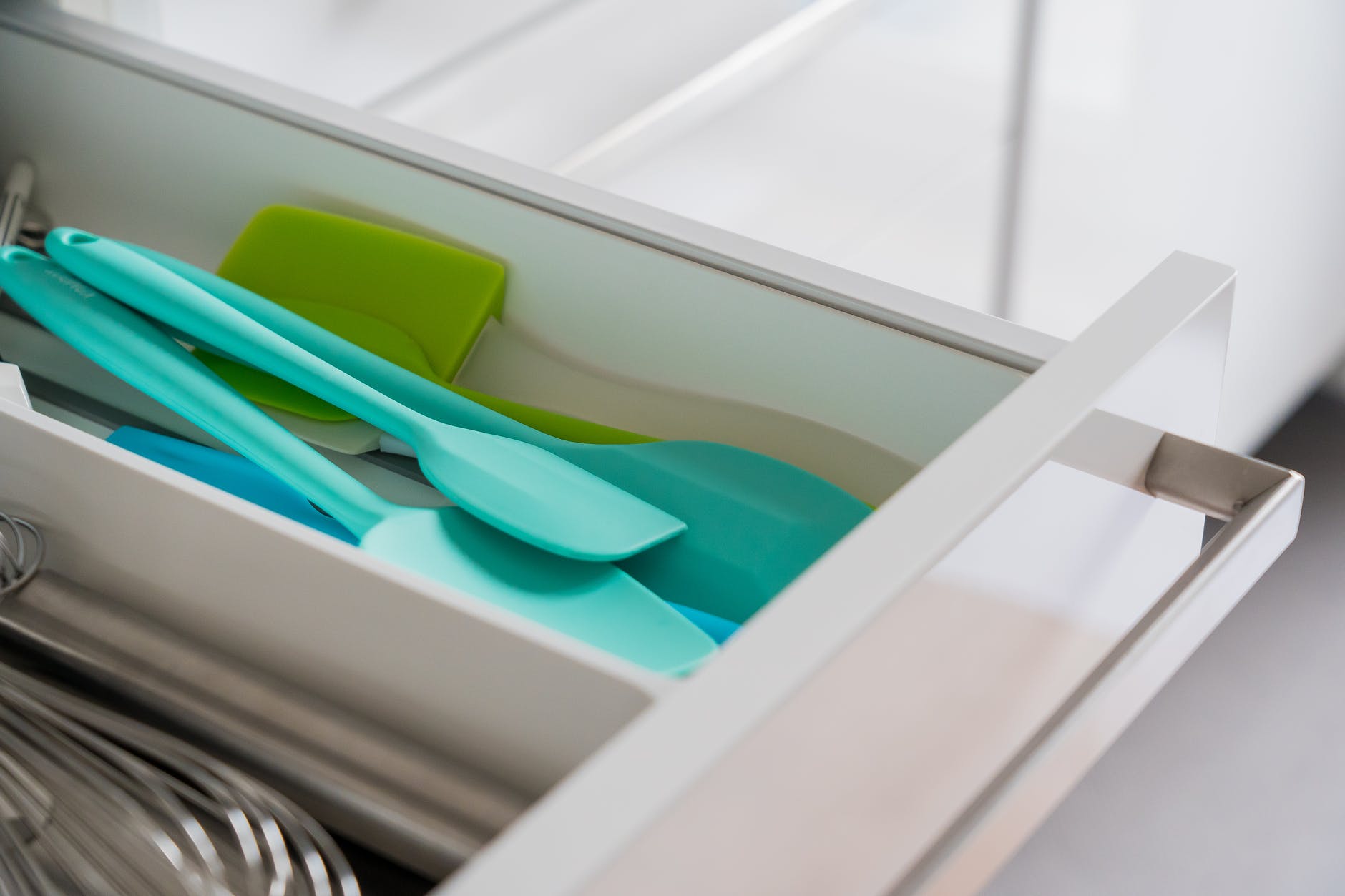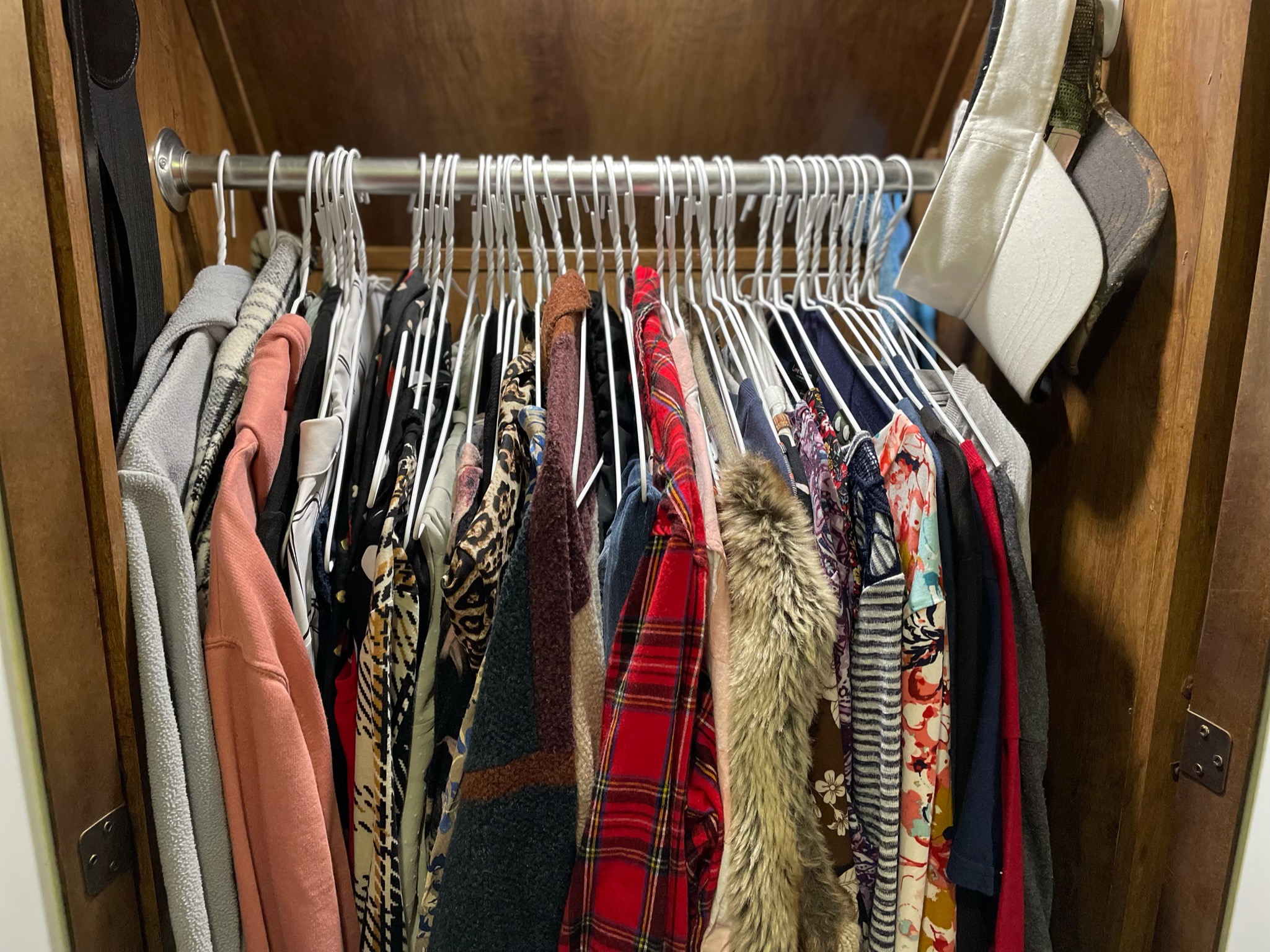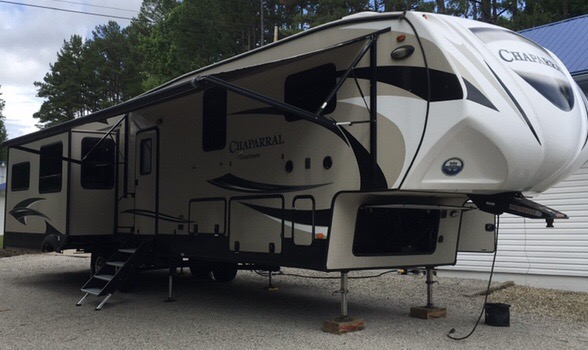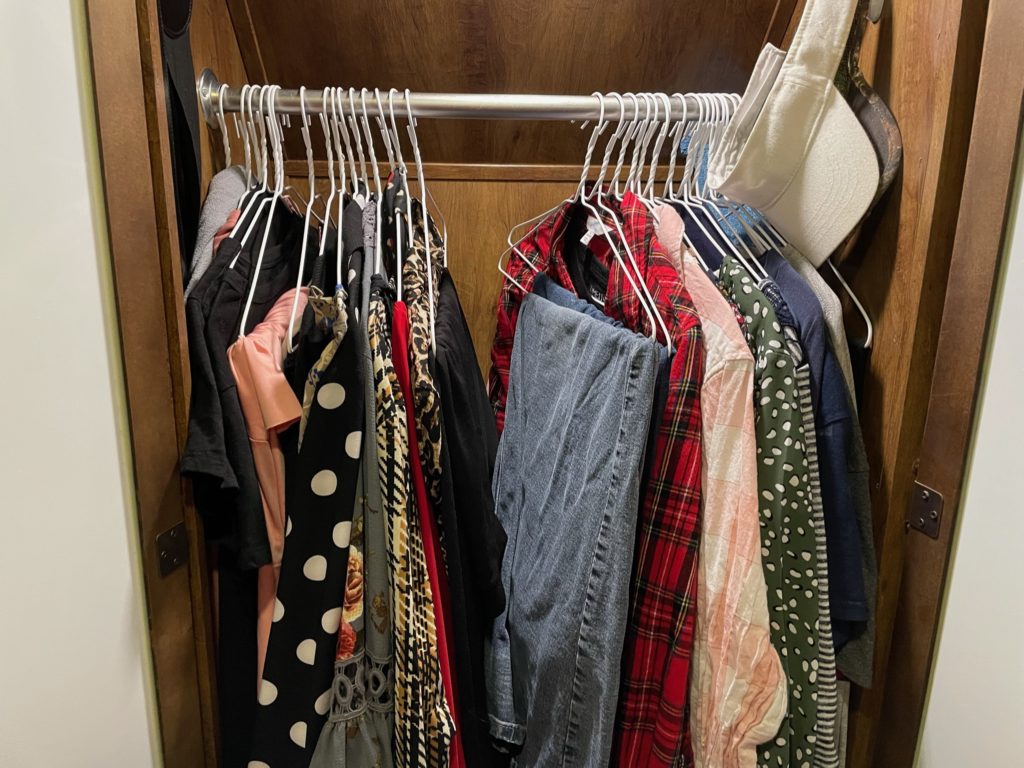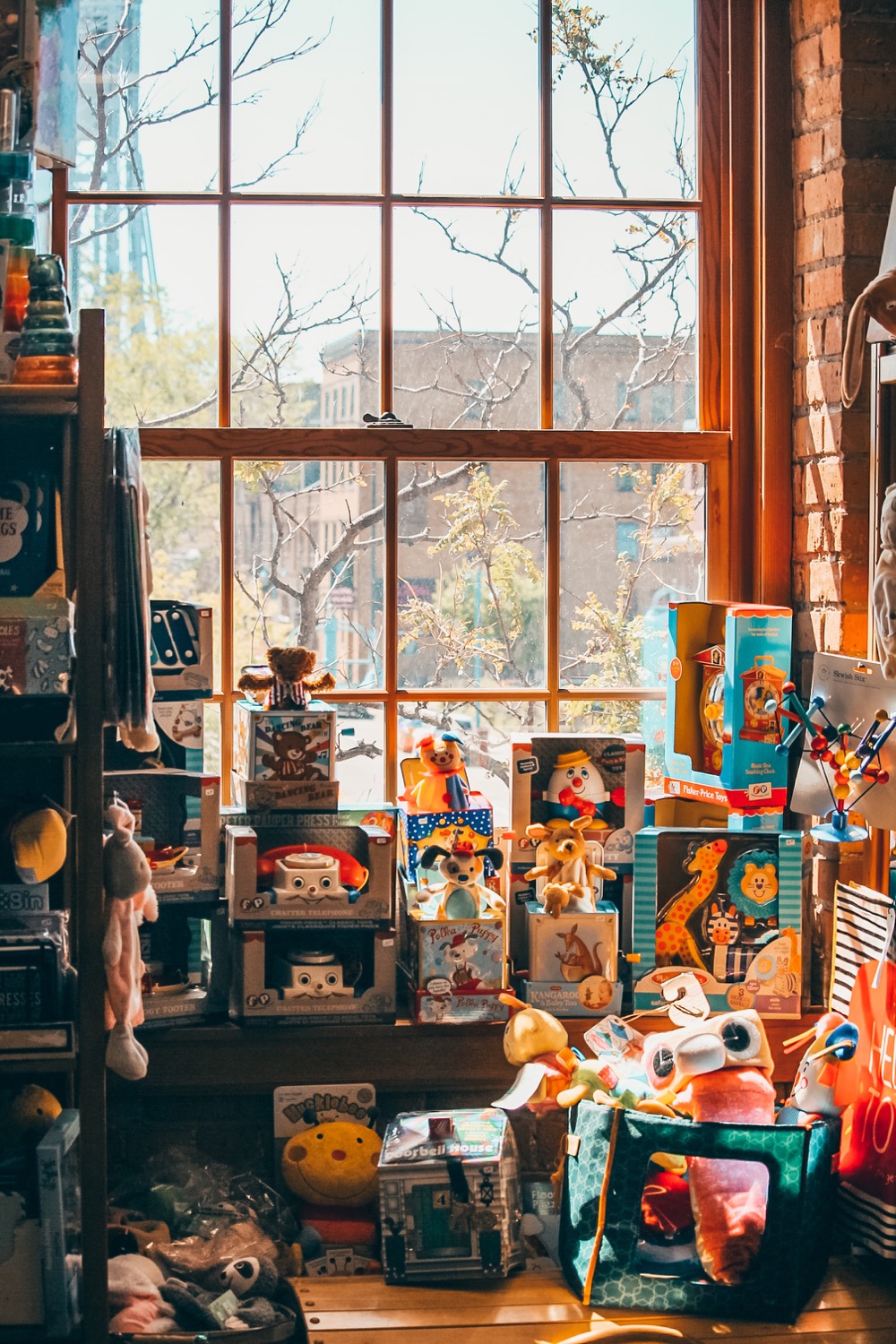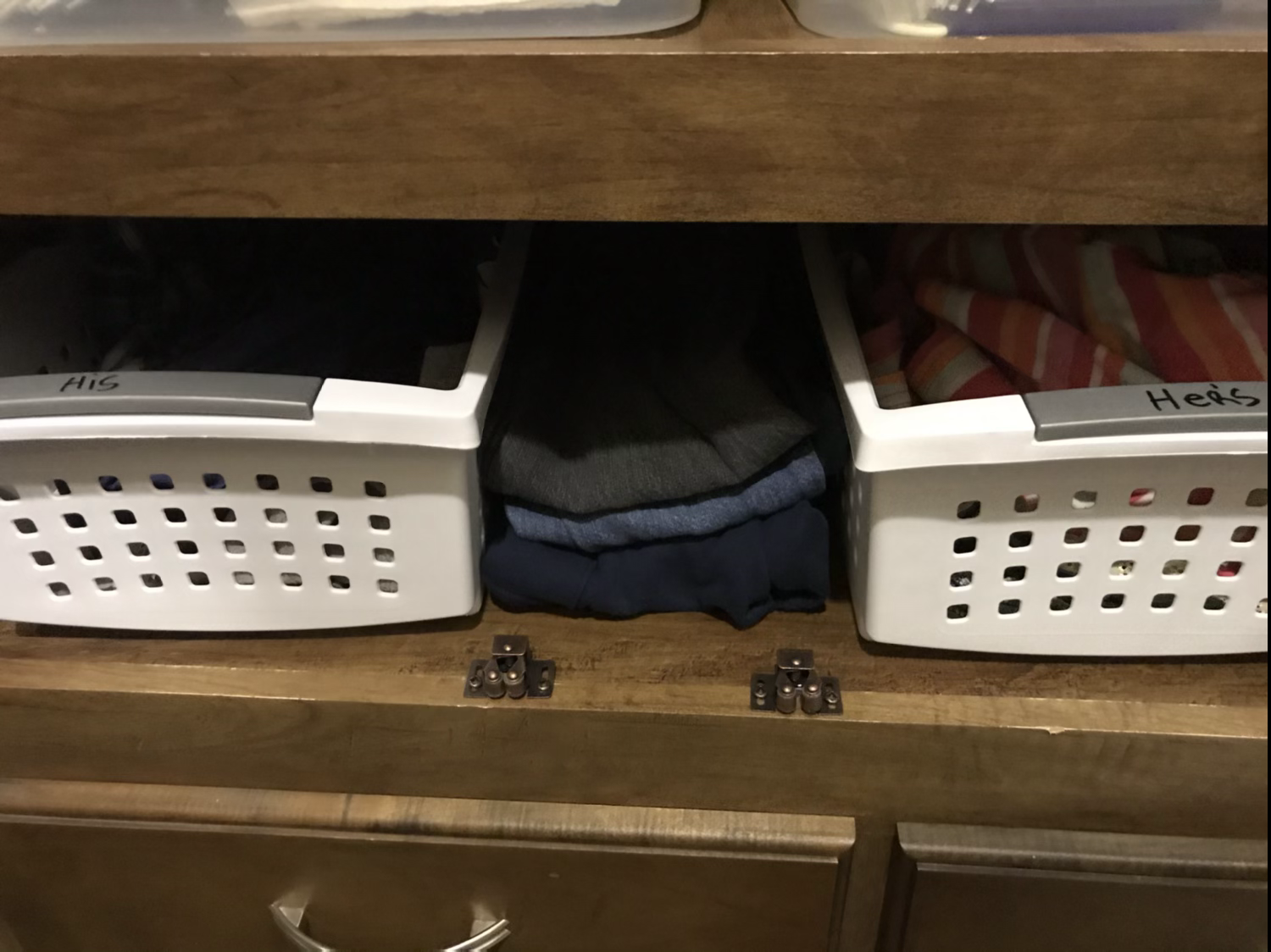
1. Stay Organized
Staying organized, even at a basic level, can simplify your housework tremendously! The number one way to stay organized is to give everything a home. (Labels help as a reminder to yourself & to your family where that home is). Giving everything a home makes it easier to put things away & save time of looking for lost items.
2. Always Declutter
Decluttering is halfway done once you have given everything a home ! ⬆️ You will often find that when you have to much stuff, items don’t have a “home” at all. This is a sign that you may have more inventory than your space allows for. I encourage you to reguarly keep a donation bag going. This helps the clutter stay down so much! Some people think this is over kill…. but have you ever thought about how many items we bring into our home on a weekly basis? Why is it that so much less is usually being rotated out? Eventually, these items began to pile up in our closets, cabinets, drawers, and floors. Ladies, it’s time to declutter! And if you’re feeling a little wasteful, it may be time cut back on how much you are bringing in too! A good rule of thumb, when shopping, is to ask yourself “ do I really need this item?” If yes, then ask yourself if you will actually use it? Lastly, where will it belong in your home? Sometimes the answers to these questions will help us prevent “impulse” purchases.
3. Make a morning routine
Morning routines don’t have to be super strict (although they can be). A morning routine is simply an orderly pattern of events that happen on most mornings to make your day go smoother. Having A morning routine puts your brain on auto pilot, accomplishing some of the most important things first thing in the morning. It also sets a routine for your family, they know what to expect and can comply without confusion. A morning routine is a great way to start of your day! Morning routines can be flexible and can even begin at a different time each morning if needed.
4. Make a bedtime routine
A bedtime routine has the same benefits as the morning routine. Bedtime may or may not be a very happy time for your children. Having A routine really helps skip the unhappiness of “bedtime” with little children. They begin to know exactly what to expect when “bedtime” comes and the fight becomes less. Bedtime routine also enables the children to be more independent with certain bedtime responsibilities, since they know exactly what’s expected next. Older family members can also jump in easily. Here’s a little tip- I like to add something relaxing/ calming to do with my children as part of bedtime routine. This helps calm and wind them down making it easier for them to fall asleep.
5. Stay stocked on household necessities & food staples!
Staying stocked up on your everyday grocery and household items is a must! Constant runs to the store for things like “an egg” before dinner can be finished, “toilet paper” before friends comes over, or “kids Tylenol” at midnight, these hectic runs can be everything BUT smooth in our lives. Staying stocked up (even just a little extra) can save a lot of stress, time, and chaos!
6. Keep a running grocery list
Keeping a running grocery list will not only keep you from “running out” of items unexpectedly but it can save time by cutting down on the grocery trips per week. Sitting down and making a grocery list right before your trip is fine, if you have an amazing memory, but if you’re like me and often forget items, then I encourage you to keep a running grocery list! Anytime you think of an item you need to restock, write it down! Then at the end of the week, when you’re ready to grocery shop, you can sit down and finish that list like you usually would without missing a thing.
7. Do basic Meal planning
Does meal planning over whelm you? It doesn’t have too! Some people love extensive meal planning techniques and that’s great if that’s your thing. But If this overwhelms you, don’t just through out meal planning all together. There is a simpler way that can still give you some of the benefits without all the extras. Simply grab you a piece of paper, your planner, and a pen. Decide how many meals you need to cook that week. Now it’s time to glance through those cabinets and fridge and see what you got. Make a mental or physical note of anything in particular that you would like to use up before it goes to waste. Sit down and began writing down ideas using the foods you just seen. Consider exactly how busy you will be that week when choosing what meals to prepare. As you write each meal down, write the “needed” ingredients for that meal on your shopping list. That’s it! Now, if you’re worried about what day to cook which meal, stop stressing! Those can be swapped at any point in time. I like to use erasable pens (pencil would also work) so I can easily erase and swap meals as my week goes on. You could also slide your meal plan in a protective sheet and use a dry erase/ wet erase marker or a dry erase board.
8. Pre cook meats
Precooking meats in bulk can littlerly save you a ton of time and make dinner preparation 10 times easier! Imagine having your meat all cooked nearly everytime you began dinner? Wow! That’s what you can do for yourself by pre cooking meat and you can do it soo easily! My favorite way to pre cook meat in bulk is in my instant pot. It’s so quick and easy! I then freeze it in meal size portions to easily thaw and use for meals.
9. Have a “town day”
Setting one designated town day is one of my favorite ways to cut down on the craziness and keep a smoother flow going in our home. Running to town constantly and unexpectedly can really disrupt the daily flow of your day. Having one main “town day” can help the rest of the week run smoother. How does this help? First of all, it’s more efficient to do all your errands while already in town. Secondly, you can plan for less housework on this day and really focus on accomplishing the “away from home” duties. You can also plan dinner accordingly on town days. This frees up the rest of the week for a more “normal” schedule.
10. Use a daily planner
Planners may not be for everybody but using a daily planner really helps me stay on top of things! I’m able to jot down things on my to do list, mark dates on my calendar, tuck important papers in the back to file later, keep my running shopping list at my finger tips, and so much more! All do all of this in my little, compact, Sue Hooley planner! (Linked below)
I hope these 10 tips help you simplify your life even more in the future! I would love to hear about ways you simplify your life in the comments below!
Don’t forget to subscribe to my blog!




